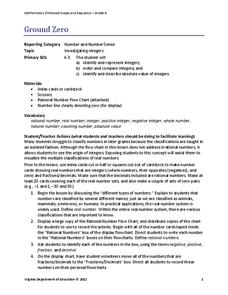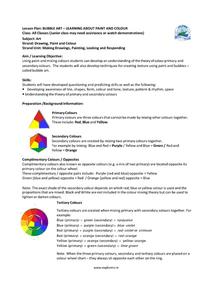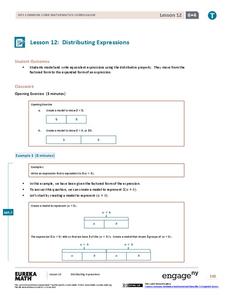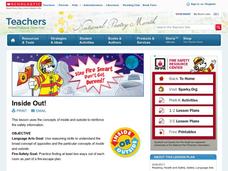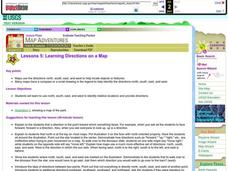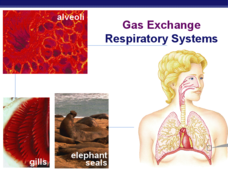Virginia Department of Education
Ground Zero
Don't harbor any negative feelings toward negative numbers. Scholars learn about different classifications of rational numbers, including negative integers. They also develop definitions of the opposite and the absolute value of a...
Marine Institute
Bubble Art – Learning About Paint and Color
To gain an understanding of color mixing theory and the color wheel, young artists draw a picture, mix up a batch of secondary colors to which they add dish soap, and using straws, bubble up the paint....
Teach Engineering
Equal and Opposite Thrust in Aircraft: You're a Pushover!
It's the law—every action requires a reaction, no matter how small. Pupils experience two demonstrations of Newton's third law of motion as it relates to thrust in the 10th segment of a 22-part unit on flight. Using their mathematical...
EngageNY
Distributing Expressions
You know how to factor expressions; now it's time to go the opposite way. Scholars learn to write algebraic expressions in expanded form using the distributive property. A problem set helps them practice the skill.
PBS
Regional Patterns of Climate: Pacific Northwest
Climate systems involve sunlight, ocean, atmosphere, ice, land forms, and many other factors. Scholars explore each of these variables related to the Pacific Northwest rain forest. They use an online interactive to investigate the polar...
College Board
2004 AP® English Language and Composition Free-Response Questions
Shall we agree to disagree? Scholars have the opportunity to choose a topic they feel is controversial in the world and express ideas about it. They complete essays that address the opposite views. In two other essays, they analyze a...
DocsTeach
Letter to Truman about the Manhattan Project
Delve into the past to understand the opposition to the Manhattan Project. An interesting activity is designed to be completed in pairs, groups, or individually. Scholars analyze historical documents, complete an online worksheet, and...
Arcademics
Word Frog
The Word Frog learning game challenges scholars to identify synonyms, antonyms, and homophones. Playing against themselves, participants turn a frog on a lilypad to snatch a sitting fly that holds a word.
Flipped Math
Inverse Trig Ratios
Put trigonometric ratios into inverse. Scholars learn how to find an unknown angle in a right triangle by using inverse trigonometric ratios. The pupils understand how the inverses undo a trigonometric ratio to provide the angle measure....
Curated OER
Subtracting Integers
In this mathematics worksheet, 6th graders subtract a number, add its opposite, and explain what opposites are, giving an example of two numbers that are opposites. Then they subtract each integer by adding its opposite.
Curated OER
Why Opposites Attract: Observing Magnetic Fields
Students brainstorm background knowledge and any questions they may have about magnetic fields. They investigate the role that William Gilbert had in laying the groundwork for modern experimental science. Students observe magnetic fields...
Curated OER
We the Community
Students explore the concept of philanthropy. In this service learning activity, students design and create informational books regarding nonprofit agencies and philanthropists in their community.
Curated OER
Harmony Day - Listen In
Here is a great idea for building cultural awareness and good listening skills. The lesson suggests having a guest speaker come to the classroom to share his/her experiences. Prior to the visit, the class will generate a list of...
Curated OER
Learning Opposite Words
Students explore words that are opposite such as hot/cold. Then, they complete a worksheet to see if they can match the words in Column A to the words that are the opposite in Column B. After that, Students write sentences for each of...
Curated OER
Subtraction as the Opposite of Addition
For this basic math operation worksheet, students learn that subtraction is the inverse of addition. They then solve 8 subtraction problems and use addition to check the answers. Answers are available on the second page.
Curated OER
Gearing Up--Learning About Gears
In this learning about gears worksheet, 5th graders read and discuss a 1 page article on gears, fill in 7 blanks to complete 5 facts about gears and make a set of gears from a template provided in the worksheet.
Curated OER
An Opposite View
Eleventh graders identify and discuss opposite historical positions. They synthesize a letter of response using historical background.
The New York Times
I Don’t Think So: Writing Effective Counterarguments
When it comes to writing effective arguments, writers must do more than simply make a claim, counterarguments must be considered. Aspiring writers analyze counterarguments in editorials, and then learn how to write counterarguments in...
Curated OER
Inside Out!
Students use reasoning skills to understand the concepts of opposites, inside, and outside. In this early childhood lesson plan, students identify words that are opposites, particularly inside and outside. Students then apply their...
Curated OER
Personality Adjectives
In this personality adjectives worksheet, students complete sentences with adjectives, find the opposites to personality traits, and identify personality adjectives that relate to star signs. Students complete 55 questions total.
Curated OER
Learning by Logic - Total Surface Area
Geometers calculate the area of plane surfaces using the formulas for the area of a square, rectangle, and triangle. They develop the formula for calculating the total surface area of two geometric solids: the cube and rectangular prism.
Curated OER
Learning Directions on a Map
Students use north, south, east, and west to identify relative locations and provide directions.
Curated OER
Learning About Triangles
Upper graders label four triangles and fill in the labels correctly. They draw three original triangles and answer the questions about them.
Curated OER
Gas exchange: Respiratory Systems
The need for a respiratory system in humans versus being reliant on gas exchange structures is demonstrated. There are many details about the advantages and disadvantages of each mechanism. Students are able to learn about the...


